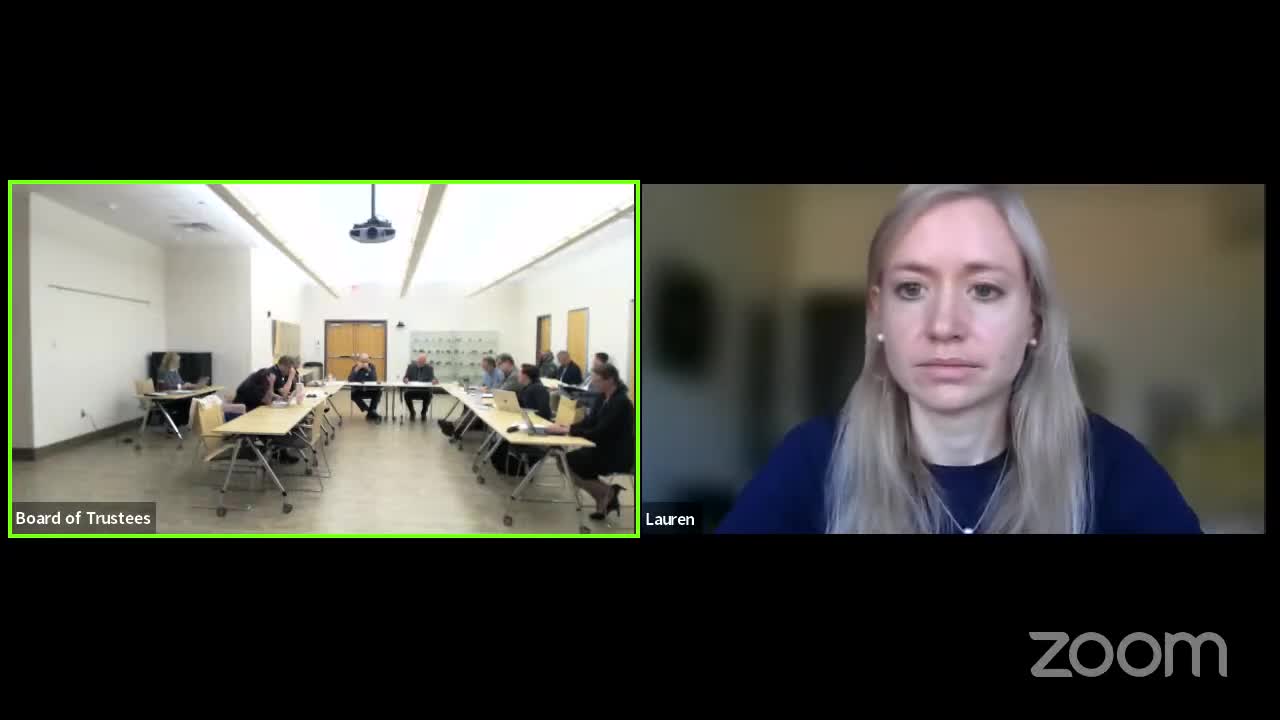Virginia Museum of Natural History announces curator promotions and new research initiatives
November 17, 2024 | Virginia Museum of Natural History, Executive Agencies, Executive, Virginia
This article was created by AI summarizing key points discussed. AI makes mistakes, so for full details and context, please refer to the video of the full meeting. Please report any errors so we can fix them. Report an error »

The Virginia Museum of Natural History (VMNH) Board of Trustees convened on November 16, 2024, to discuss significant developments in research, collections, and educational outreach. The meeting highlighted the museum's ongoing commitment to advancing scientific knowledge and preserving natural history.
The session began with an emphasis on the importance of the quarterly report, which details the extensive work of the curatorial and research staff. Notably, Dr. Cal Ivanov was promoted to full curator, recognized for his expertise in underrepresented species in Virginia, including isopods and other lesser-known invertebrates. His work is crucial for understanding environmental health and conservation efforts, as these species can indicate changes in habitat conditions.
Dr. Jackson Means was also acknowledged for his role as a permanent staff member, specializing in millipedes and centipedes. His collaboration with caving organizations has led to the discovery of new species, showcasing the museum's expanding influence and reputation in the scientific community.
The meeting further explored the contributions of various researchers. Dr. Bassett is investigating underwater archaeology at Smith Mountain Lake, uncovering historical foundations and roads. His work also includes monitoring the destruction of cultural heritage sites in war-torn regions like Ukraine and Sudan, emphasizing the museum's role in global heritage preservation.
Dr. Pritchard is finalizing a manuscript on a 55-million-year-old snake and studying ancient reptiles known as drepanosaurs. Meanwhile, Dr. Kyun is preparing for a field trip to Madagascar to collect specimens for what may be a new salamander species in Virginia, highlighting the museum's active role in biodiversity research.
The board discussed the pressing issue of space constraints for collections, urging curators to communicate their needs for future expansions. This conversation is critical as the museum seeks to maintain and grow its extensive collections, which serve as vital resources for research and education.
In conclusion, the VMNH Board of Trustees meeting underscored the museum's dynamic research initiatives and the importance of preserving natural history. The board's discussions set the stage for future strategic planning, ensuring that the museum continues to thrive as a center for scientific inquiry and public education.
The session began with an emphasis on the importance of the quarterly report, which details the extensive work of the curatorial and research staff. Notably, Dr. Cal Ivanov was promoted to full curator, recognized for his expertise in underrepresented species in Virginia, including isopods and other lesser-known invertebrates. His work is crucial for understanding environmental health and conservation efforts, as these species can indicate changes in habitat conditions.
Dr. Jackson Means was also acknowledged for his role as a permanent staff member, specializing in millipedes and centipedes. His collaboration with caving organizations has led to the discovery of new species, showcasing the museum's expanding influence and reputation in the scientific community.
The meeting further explored the contributions of various researchers. Dr. Bassett is investigating underwater archaeology at Smith Mountain Lake, uncovering historical foundations and roads. His work also includes monitoring the destruction of cultural heritage sites in war-torn regions like Ukraine and Sudan, emphasizing the museum's role in global heritage preservation.
Dr. Pritchard is finalizing a manuscript on a 55-million-year-old snake and studying ancient reptiles known as drepanosaurs. Meanwhile, Dr. Kyun is preparing for a field trip to Madagascar to collect specimens for what may be a new salamander species in Virginia, highlighting the museum's active role in biodiversity research.
The board discussed the pressing issue of space constraints for collections, urging curators to communicate their needs for future expansions. This conversation is critical as the museum seeks to maintain and grow its extensive collections, which serve as vital resources for research and education.
In conclusion, the VMNH Board of Trustees meeting underscored the museum's dynamic research initiatives and the importance of preserving natural history. The board's discussions set the stage for future strategic planning, ensuring that the museum continues to thrive as a center for scientific inquiry and public education.
View full meeting
This article is based on a recent meeting—watch the full video and explore the complete transcript for deeper insights into the discussion.
View full meeting
